This article is going to cover fishing Carolina rigs for bass.
Fishing is a beloved activity that people all around the world enjoy. However, there’s always a way to improve upon the experience. One of the ways is to use Carolina rigs when you’re fishing for bass. Carolina rigs are a fantastic way to catch more bass and are incredibly versatile, making them useful in many different fishing situations.
In this article, we’ll provide an in-depth discussion of Carolina rigs. We’ll cover everything from the equipment involved to the best techniques, and we’ll provide some expert tips to help you get started.
What are Carolina Rigs?
First things first, what is a Carolina rig? A Carolina rig is a fishing rig consisting of a leader with a weight on one end and a hook on the other. The rig is designed for bottom fishing, allowing the bait to move naturally along the bottom of the river, lake, or reservoir. Carolina rigs have gained significant popularity among bass fishermen, largely due to their effectiveness throughout the year.
Benefits of Using Carolina Rigs
There are several benefits to using Carolina rigs when fishing for bass. One of the main advantages is the ability to fish at varying depths. Carolina rigs allow the angler to adjust the weight to their desired depth, making it an excellent option for fishing in deep water or shallow water. Moreover, Carolina rigs are versatile and can be used in a wide variety of fishing situations, such as murky or clear water.
Additionally, Carolina rigs allow for greater bait mobility, allowing the bait to move freely along the bottom of the river or lake, mimicking natural prey. This makes Carolina rigs an exceptional choice for catching bass. Finally, Carolina rigs provide an excellent way to detect strikes from fish since the sinker is separated from the bait, and any movement in the leader can signal that a bass has bitten the hook.
A Carolina rig is an excellent choice for bass fishing when you need to fish deep or when the bass are not actively feeding. Typically, you would use a Carolina rig when fishing in deeper waters, such as drop-offs, ledges, or flats. The Carolina rig is also useful when you’re fishing in areas with heavy cover, such as weed beds or submerged logs, as the rig allows the bait to float above the cover and less likely to get snagged.
The Carolina rig is also an excellent choice when fishing in colder waters because the rig allows the bait to move slowly and naturally, which is more appealing to sluggish fish.
Overall, the Carolina rig is a versatile and effective rig that should be in every bass angler’s tackle box.
Components of Carolina Rigs
Next, let’s talk about the equipment you need to create a Carolina rig. There are several components to consider when building a Carolina rig: hooks, weights, beads, leaders, and swivels.
Hooks
The hook is a crucial component of a Carolina rig. When fishing for bass, it’s essential to use the right hook size, depending on the size of the bass you’re targeting. Using an overly large hook could limit the appeal of your bait and deter smaller fish, while using a smaller hook than recommended could result in losing the fish you’ve caught.
It is essential to use a hook with a wide gap, which increases the likelihood of hooking the fish and keeping it on the hook. Bass fishermen typically use hooks sizes ranging from 1/0 to 5/0.
Weights
The weight is another essential component of a Carolina rig. The weight will determine how far you can cast and how deep you can fish, which is critical to catching bass. The type of weight you’ll need depends on the water condition, whether you’re fishing in still or moving water.
The most common type of weight for a Carolina rig is a bullet weight. These weights are bullet-shaped and come in different sizes, ranging from 1/16 to 2 oz. When selecting a weight, browse for water conditions since the weight will affect how the bait moves through the water column.
Beads
The bead is a small, plastic component placed between the hook and the weight. The bead works by creating a sound when it hits the weight, which can attract fish. The most common type of bead used for Carolina rigs is a glass bead. They’re available in various colors, but clear or red are often favored by anglers.
Leaders
The leader is the connection between the mainline and the hook, and it’s essential to ensure the leader is of suitable length, durability, and strength. The leader can be made from either monofilament or fluorocarbon, and the length of the leader varies depending on the fishing situation and water clarity.
The typical length of a leader for Carolina rigs ranges from two to five feet. Fluorocarbon leaders are more challenging for fish to see and become invisible under the water. On the other hand, monofilament leaders have more flexibility, allowing for easier casting and knot tying.
Swivels
Finally, swivels connect the leader to the mainline and can provide flexibility when casting or changing baits. It’s generally best to use a high-quality swivel and to continue to check the condition, as a damaged or worn-out swivel could result in a lost fish.
Best Carolina Rig Gear
Fishing Rods
- Medium Heavy Power Rod: A medium-heavy power rod is ideal for Carolina rig fishing as it offers enough backbone to handle bigger fish and also provides some sensitivity to feel the bottom structure. However, this is not a hard and fast rule and the power of the rod may differ based on the water conditions and the size of the fish you are targeting. Generally, a moderate-fast action is recommended for Carolina rig fishing.
- 7-foot length or longer: A longer rod allows for longer casts and greater leverage when setting the hook. A 7-foot rod, or longer, is often recommended for Carolina rig fishing. However, depending on the body of water you are fishing in and how you plan to fish, you may want to go longer or shorter.
- Fast action tips: A fast action rod tip is important when fishing with a Carolina rig as it helps to transmit the slightest movements and bites down the line. This can make all the difference in detecting bites and getting a good hookset.
- Graphite blank: Graphite rods have become popular among anglers due to their sensitivity and strength. Graphite is a lightweight material that can make the rod more sensitive to the feel of bites and bumps along the bottom.
- Match the rod to the bait: The weight of the bait you plan to use should determine the power and action of the rod you choose. Generally, a heavy sinker requires an extra heavy power rod, whereas a lighter sinker can be paired with a medium heavy power rod.
Recommended Rods
- St. Croix Bass X Casting Rod: The St. Croix Bass X is a great all-purpose rod that is ideal for many different bass fishing techniques, including Carolina rig fishing. It features a premium SCII graphite blank and a durable, high-quality reel seat, making it a reliable and durable option. The medium-heavy power and fast action allow for increased sensitivity, responsiveness, and casting distance, which makes it easier to detect bites and set the hook. This is a good budget option, but be sure to check out the Mojo and Victory series also if you’re looking a higher end rod.
- Abu Garcia Veritas Casting Rod: The Abu Garcia Veritas is a strong and durable graphite rod. It features a high-strength blank with a fast action tip that is designed to be sensitive enough to detect light bites while also being capable of handling big fish. This rod is a great option for catching bass in heavy cover since it has good sensitivity and a strong backbone that also offers powerful hooksets.
- Fenwick HMG Casting Rod: The Fenwick HMG is a blend of both durability and lightweight sensitivity. It features a high-modulus graphite blank with tapers specifically designed for casting accuracy and power. The medium-heavy power and fast action provide an excellent balance of sensitivity and strength, which means that you can feel even the slightest nibble and set the hook quickly when a fish bites.
- Daiwa Tatula Casting Rod: The Daiwa Tatula is a tournament-quality rod that is designed for anglers of all skill levels. It features a high-quality U.S. blank construction that is both lightweight and durable. The high-modulus blank provides plenty of sensitivity and responsiveness, while the high-quality guides are designed to reduce friction and provide longer, smoother casts. Its medium-heavy power and fast action make it an ideal choice for fishing Carolina rigs, as it delivers plenty of power while also being capable of detecting the slightest bite.
Ultimately, the best rod for Carolina rig fishing will depend on personal preference, fishing conditions, and the type of bait you’re using. These four rods provide an excellent starting point, and each has its unique features that may make it the perfect choice for your bass fishing needs. I would stick to at least a medium heavy in each of these series, with fast tips and at a length of at least 7′, preferably 7’6″ for longer casts.
Fishing Line
- Monofilament: Monofilament fishing line is a popular choice for Carolina rigs because it is affordable and easy to use. It also has some stretch to it, which can help absorb the shock of a strike.
- Fluorocarbon: Fluorocarbon fishing line is another good option for Carolina rigs. It is virtually invisible underwater, which can be a big advantage when fishing for bass in clear water. Fluorocarbon is also more sensitive than monofilament, so you will be able to feel bites more easily.
- Braided: Braided fishing line is a strong choice for Carolina rigs because it has little to no stretch, which means that you will have more control over your bait and be able to detect bites more easily. However, braided line can be more expensive than other types of line and may require a fluorocarbon or monofilament leader to make it more invisible to the fish.
Ultimately, the type of fishing line you choose for your Carolina rig will depend on your personal preference, the conditions you are fishing in, and the type of bass you are targeting. It is always a good idea to experiment with different types of line to see what works best for you.
Hooks
- Wide Gap Worm Hooks: These hooks have a wide gap to allow better hooksets on the fish. A popular option is the Gamakatsu EWG Offset Hooks.
- Offset Shanks Hooks: These hooks have an offset shank that helps to keep the bait in place. The Mustad UltraPoint Offset Shank Worm Hooks are a good option.
Overall, the best Carolina rig hook to use for bass fishing depends on the type of bait you are using and the kind of cover you are targeting. It’s always a good idea to have a few different hooks in your tackle box to adjust to the situation.
The Carolina Rig Setup That Helped Me Win Over $100,000
Techniques for Fishing with Carolina Rigs
Now that you know how to set up a Carolina rig, it’s time to learn how to use it. The three main techniques for Carolina rigs are casting and retrieving, dragging, and hop and pause. Here’s an overview of each method:
Casting and Retrieving
Casting and retrieving is the most common technique used with Carolina rigs. Begin by making a long cast to allow the weight to sink towards the bottom of the lake or river. Once you feel the weight of the sinker, reel in the excess line, so you’re prepared for a fish strike.
Begin retrieving the bait, making sure to keep it in contact with the bottom of the river while maintaining an erratic motion. Gradually reel in the bait, ensuring the weight of the rig remains in contact with the bottom of the riverbed, and reeling a few inches back to give the bait a bit of motion.
Dragging
Dragging is a useful technique when fishing in deeper water or when the bass is huddled closer to the bottom of the lake or reservoir. Perform the casting motion as usual, eventually allowing the rig to come to a complete stop on the bottom of the river.
From there, slowly pull the Carolina rig along the river bed, making sure to keep contact with the bottom. Repeat this motion, ensuring the bait keeps moving and changing depths until you get a bite.
Hop and Pause
The hop and pause technique is useful when fishing in shallow water or around structure. First, cast the Carolina rig towards the structure or shallow location you want to target. Allow the bait to drop towards the bottom of the water until you feel the weight of the rig touch the bottom of the lake or river.
Slowly reel in the bait, keeping it in constant contact with the bottom of the river while occasionally making quick hops to give your bait some movement. Hopping the bait gives it an action that can provoke a strike from bass. Repeat this motion before pausing for a few seconds, allowing the bait to rest on the bottom before resuming the hop and pause motion.
2 Must know Carolina Rig Tips
Best Baits for Carolina Rigs
With the Carolina rig set up, it’s time to choose your bait, which is an essential consideration when it comes to fishing. The best baits for Carolina rigs are often soft plastic lures that mimic natural baits. Here are the top picks:
Soft Plastics
Soft plastic lures are an excellent option for Carolina rigs. They come in a wide range of shapes and sizes, making them perfect for different fishing situations. Some options include crawfish, lizard, worm, and jerkbait imitations.
The general rule is to use lighter-colored plastics in clear water and darker-colored ones in murky water. As a rule, use plastic lures ranging from two to six inches long with Carolina rigs.
Crawfish Imitations
Crawfish imitations are an excellent choice for Carolina rigs since crawfish and bass go hand in hand. Crawfish have a natural appeal to bass, making them a perfect choice for Carolina rigs. Use brown or green patterns for the best effect, imitating natural conditions in the water.
Worms
Finally, worms have always been a favorite for bass fishermen and are also a great option for Carolina rigs. When using worms, make sure to select soft and supple worms, providing them with an attractive motion as you drag them across the bottom of the river. The best worm color depends on the water
color and clarity. In clear water, use lighter colors like green pumpkin or watermelon and darker colors like junebug or black in murky water.
Try These Secret Carolina Rig Baits
Choosing the Right Carolina Rig Setup
Choosing the right Carolina rig setup is essential to catching more bass. Factors like water clarity, depth, and vegetation come into play when selecting the right setup. Here are some tips to help you choose the right Carolina rig setup:
Water Clarity
Water clarity is an essential factor to consider when choosing your Carolina rig setup. Clear water requires light line and smaller baits to appear more natural. Fluorocarbon leaders are an excellent option for clear water, providing greater invisibility. In murky water, use a heavier line and larger, more visible baits.
Depth
The depth is another factor to consider. If fishing deeper water, select a heavier weight to ensure the bait remains in contact with the bottom. Experiment with different weights to achieve the desired depth for your fishing situation. It’s important to note that the weight you choose also depends on the current of the water.
Vegetation
Vegetation is another factor to consider when choosing your Carolina rig setup. When fishing around vegetation, use a Texas-rigged bait with an exposed hook point. This setup will help prevent your rig from getting caught in the weeds or other vegetation.
Leader length can make the difference
changing the leader length of your Carolina rig for bass fishing can have a significant impact on your fishing success. The leader length refers to the length of the line between the sinker and the hook, which can be adjusted in different situations to appeal to different bass.
Here are a few tips on varying leader length for a Carolina rig:
- Shorter leader length: If you are fishing in clear water, a shorter leader length of around 12-15 inches is recommended. This will allow your bait to be more visible to the bass and increase your chances of getting a bite.
- Longer leader length: In muddy or murky waters, you may want to use a longer leader length, around 2-3 feet. This will help keep the bait out of the sediment and increase your chances of attracting a bass.
- Adjust for the depth: Depending on how deep you are fishing, you may need to adjust the leader length. The deeper the water, the longer the leader needs to be. A good rule of thumb is to use a leader length that is two-thirds of the water depth.
- Experiment: Ultimately, the best way to determine the ideal leader length for your Carolina rig is to experiment. Try different lengths until you find the one that works best for you. Pay attention to how the fish are reacting and adjust accordingly.
Remember to always take the time to experiment with the lengths and pay attention to the conditions of your fishing. Good luck and happy fishing!
Best Baits And Leader Length For Carolina Rigs Offshore
Best Places To Fish A Carolina Rig
Sandy or Rocky Bottoms
A Carolina rig is perfect for fishing over sandy or rocky bottom areas. The setup can be easily dragged or bounced over the bottom, creating a commotion in the water that can attract nearby bass. It is a good technique to use in the summer months when bass move to deeper waters.
Underwater Structures
The Carolina rig can be used to effectively fish structures such as drop-offs, ledges, and humps. By rigging your bait with a heavy weight, you can fish along the contours of these structures, creating a natural presentation. The rig can also be effective when targeting fish that are suspended above the structure.
Weed Beds
The Carolina rig excels in fishing weed beds, as it allows an angler to drag a bait over the top of the weeds without getting caught. The rig’s long leader also allows the bait to penetrate deep into the weeds where the bass are hiding. A weedless bait like a soft plastic lizard is ideal for fishing weed beds with a Carolina rig.
Submerged Trees
Submerged trees, brush piles, and other cover can be great places to fish for bass with a Carolina rig. The rig allows you to present your bait close to the cover without getting snagged. When fishing around cover, it is important to use a bait that is weedless, as it will help prevent snagging and keep the bait presenting properly.
Deep Water
The Carolina rig can be extremely effective in deep water, where fish often hold during the hot summer months. By rigging a heavy weight, you can explore deeper water columns that may be holding fish. The rig can also be effective when targeting suspended fish in deeper water.
Overall, the Carolina rig is a versatile technique that can be used to target bass in a variety of different environments. By keeping these different areas in mind and learning when and where to use the Carolina rig, you can improve your chances of catching more fish.
Fishing The Carolina Rig By Season
Winter:
During the winter months, the water tends to be cold and the fish become less active, so the best tactic to fish the Carolina rig during this season is to fish slowly and methodically. Use a heavier weight (3/4 oz or more) to keep the rig on the bottom and fish deeper, rocky areas or submerged timber where fish will be seeking shelter and warmth. Some anglers will prefer to use a smaller bait during the colder months, but this can vary depending on the region and type of fish you are targeting.
Prespawn:
As the temperature begins to warm up in late winter and early spring, fish will start to move into shallower waters. Fishing the Carolina rig near rocky points, creek channels, and submerged weed beds can be particularly effective during this time. When fishing for prespawn fish, use a lighter weight (1/2 oz or lighter) as the fish will not be as deep. The bait size can vary, but some anglers prefer to use a larger bait to try to catch the bigger fish.
Learn about the top baits to use during the prespawn
Spawn:
The spawn typically occurs in the spring, and during this time, fish tend to move into shallow water to spawn. Fishing the Carolina rig near spawning beds can be very effective for catching fish, but be sure to release any spawned-out fish to protect the future of the fishery. Use a lighter weight like 1/4 oz or less and a smaller bait like a soft plastic worm to mimic the minnows, worms, or other natural bait that fish may feed on during the spawn.
Learn about the top baits to use during the spawn
Post spawn:
After spawning, many fish will move to deeper water to recover. Fishing the Carolina rig in deeper water near drop-offs or submerged structure can be effective during this time. Using a heavier weight and larger bait to get to the bottom and mimic the natural prey is the preferred approach. Depending on the species of fish, some anglers like to use crawfish or baitfish imitations.
Learn about the top baits to use during the post spawn
Summer:
In the summer months, fish tend to be more active, and fishing the Carolina rig near points, ledges, and flats can be effective. Be sure to fish in the early morning or late afternoon, as fish tend to be less active during the heat of the day. When the sun is high, focus on deeper water (10-15 feet) and use a heavier weight to get to the bottom. Using a larger bait and more vibrant colors can help catch fish as the heat of the sun makes it harder for fish to locate natural prey.
Learn about the top baits to use during the summer
Fall:
During the fall months, fish will begin to move back to deeper water in anticipation of winter. Fishing the Carolina rig near points, drop-offs, and submerged structure can be effective during this time, as fish will be seeking shelter and food before winter sets in. Use a heavier weight and a larger bait that looks like the natural prey fish at this time of the year. Fishing in the early morning or late afternoon is still the preferred time, again as fish tend to be less active during the hotter parts of the day.
Learn about the top baits to use during the fall
Carolina Rig Mistakes To Avoid
Using too heavy or light weight
The weight of the Carolina rig is crucial for effective angling. The weight needs to match the depth and wind speed of the water where the angler is fishing. Using too heavy weight can cause the rig to sink too quickly and land on the bottom, making it less natural and less likely to attract bites. On the other hand, using too light weight can make the rig float on the water’s surface and reduce its effectiveness. Additionally, the weight should be large enough to keep the rig in contact with the bottom but small enough not to spook the bass.
Ignoring the sensitivity of the rod
The Carolina rig needs to be fished with a light and sensitive bait-casting rod that allows the angler to feel the bottom and detect bites. Using a stiff rod can miss the subtle bites, leading to a low catch rate. Anglers need to use a rod that has a moderate action with a fast taper to detect strikes and feel the bottom contour. Anglers should look for a rod that can handle their preferred line and weight.
Not changing the bait
The Carolina rig is a versatile rig that anglers can rig with different bait types, including worms, lizards, crawfish, and creatures. However, it is common for anglers to use the same bait for an extended time, leading to no bites. Anglers need to change the bait regularly to match the water condition, time of day, and the feeding behavior of the bass. They need to experiment with different colors, scents, and sizes of bait until they find the right combination that triggers the bass to bite.
Choosing the wrong line
The line used for a Carolina rig is equally important as the weight and the rod. The line needs to have low visibility and high strength to withstand the abrasion of rocks and weeds. Using a visible line or a weak line can scare the bass away or snap off the rig when the angler is fighting a big bass. The line strength should be strong enough to handle the size and weight of the bait but light enough to maintain sensitivity. Anglers should consider using a fluorocarbon line to make the rig less visible to the bass.
Retrieving the rig too fast
Retrieving the Carolina rig too fast is a common mistake that most anglers make. The Carolina rig needs to be retrieved slowly and steadily to mimic the natural movement of the baitfish. Retrieving the rig too fast can make the rig look unnatural and dismissive to the bass, leading to no bites. Anglers need to vary the speed of the retrieve and pause the bait frequently to make it look more like real baitfish. They also need to keep the line tight so that they can feel the bass bite and set the hook when it bites.
Don’t Do This Carolina Rigs( C-RIG Mistakes)
Additional And/Or Advance Carolina Rig Tips
Using a heavier weight
When fishing in deep water or areas with strong currents, a heavier weight will help you keep the rig closer to the bottom where the bass are more likely to hang out. Additionally, a heavier weight will create more vibration and disturbance, which will attract more bites.
Varying the length of the leader
The length of the leader on your Carolina rig can have a big impact on how the bait moves and how fish respond. A shorter leader will keep the bait closer to the weight, while a longer leader will give the bait more freedom to move around. Experiment with different lengths to find what works best in the conditions you’re fishing.
Using a lighter wire hook
While heavy-duty hooks are a popular choice for Carolina rigs, using a lighter wire hook can increase the sensitivity of the rig and make it easier to detect bites. A lighter wire hook will also allow the bait to move more naturally in the water, which can make it more appealing to bass.
Swapping out the bait
While plastic worms are a go-to bait for Carolina rigs, don’t hesitate to try other types of baits. Creature baits or crawfish imitations can be effective options, as they offer a different profile and movement in the water. Experiment with different colors and shapes to find what works best in your fishing area.
Adding scent
Adding a scent to your bait can be a great way to attract more fish to your Carolina rig. Try using a fish attractant or applying a small amount of garlic or anise oil to your bait before casting. Just be careful not to overdo it, as too much scent can be off-putting to bass.
Paying attention to the line
Watching your line closely is critical when fishing with a Carolina rig. Look for any movement or tension on the line, as that could be a sign that a fish has taken the bait. Also consider using braid or fluorocarbon line, which provide better sensitivity and feel.
Slowing down your retrieve
Carolina rigs are meant to be fished slowly, so take your time and allow the rig to work its magic. Give the bait time to move along the bottom and attract fish. Experiment with different retrieve speeds to find what works best.
Adjusting the weight placement
Changing the placement of the weight on your Carolina rig can alter how the bait moves and how bass respond. Adjust the weight closer to the bait for a slower, more natural presentation, or move it further away for a more aggressive approach.
Pro Tip: My Secret Carolina Rig
Comparing The Carolina Rig
Carolina Rig vs Jig:
The Carolina rig and the jig are two very different fishing techniques, with different applications, and can provide different results. A Carolina rig is a great option when you want to cover a lot of water and locate fish quickly. It is an especially effective technique when fishing for suspended fish over large areas of open water. It’s also a good option for fishing around structures like drop-offs or weed beds.
On the other hand, jigs are great for bottom fishing and can be used in a variety of ways. They can be dragged along the bottom to imitate a crayfish or other bottom-dwelling prey. Jigs can also be fished vertically, jigged up and down, to target fish suspended in the water column. They are especially effective for bottom-dwelling species like bass and walleye.
When it comes to choosing between the Carolina rig and a jig, it really depends on the type of fish you are targeting and the location you are fishing. If you are fishing for suspended fish or looking to cover a large area of water, a Carolina rig may be the way to go. If you are looking to target bottom-dwelling fish or fish in heavy cover, a jig is a better option.
Carolina Rig vs Texas Rig:
The Carolina rig and the Texas rig are two very similar techniques, with the main difference being the placement of the weight. In a Texas rig, the weight is placed directly on the line above the hook, while in a Carolina rig, the weight is placed on the leader line.
The Texas rig is generally used when fishing in heavy cover where the weight needs to be close to the hook to prevent snags. The Carolina rig is better suited for open water fishing, where you need to cover more area.
The Carolina rig’s weight on the leader line allows the bait to move freely behind it, creating a more natural presentation when fished slowly. The leader also allows the bait to move around more, giving it a little more action. The Texas rig’s weight close to the hook keeps the bait close to the bottom, giving it a more natural presentation when fished quickly.
Overall, the choice of which rig to use depends on the fishing situation. If you are fishing in heavy cover, a Texas rig is the way to go. If you are fishing in open water, a Carolina rig is the better option.
90% Of Anglers Don’t Know When To Use A Carolina Rig vs A Jig
Conclusion and Final Thoughts
Carolina rigs are a versatile and effective way to catch more bass. They are excellent for bottom fishing and offer a variety of techniques to try, from casting and retrieving to dragging and hop-and-pause. When selecting your equipment, pay attention to the hook, weight, bead, leader, and swivel. Make sure to choose the right bait, with soft plastic lures being a popular choice. Lastly, consider the water conditions when choosing your Carolina rig setup, including water clarity, depth, and vegetation.
With all of this information, you’re ready to take your fishing to the next level with Carolina rigs. Experiment with different techniques, baits, and setups to find what works best for you, and most importantly, enjoy the process. Happy fishing!

Megabass Dark Sleeper Swimbaits For Bass
Introduction As an avid bass fisherman, I’m constantly on the lookout for new gear and tools to improve my chances of catching bigger and better bass. Recently, I came across the Megabass Dark Sleeper Swimbaits, and my curiosity was piqued. What makes these swimbaits so special? Do they really live up to their reputation among […]
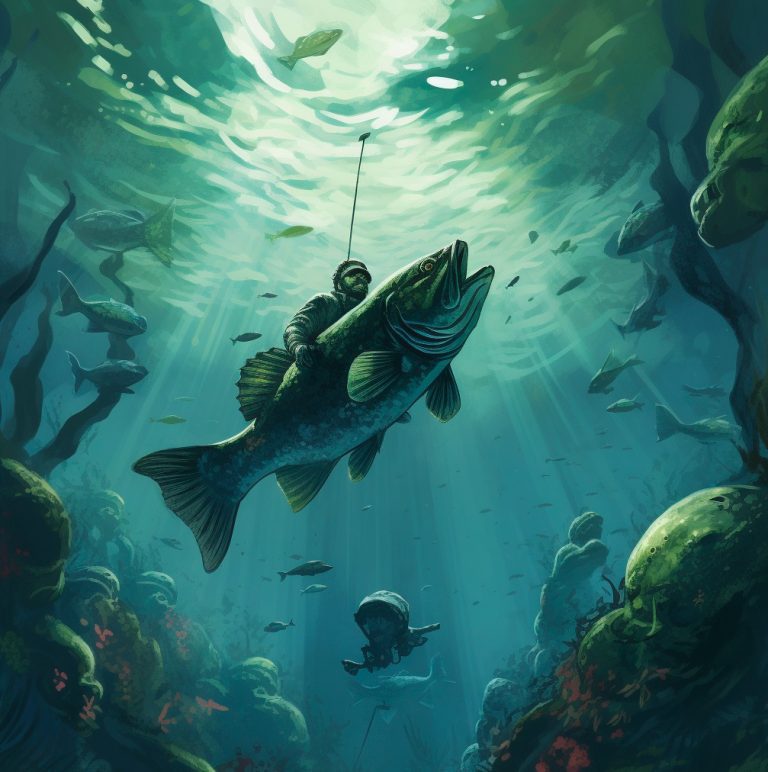
Swim Jigs For Bass: A Comprehensive Guide
Introduction As a bass angler, I’ve always been intrigued by swim jigs. They’re one of the most talked-about and effective lures in the sport, but there’s something about them that always left me perplexed. What is it about swim jigs that make them so effective? How do you choose the right one for each situation? […]
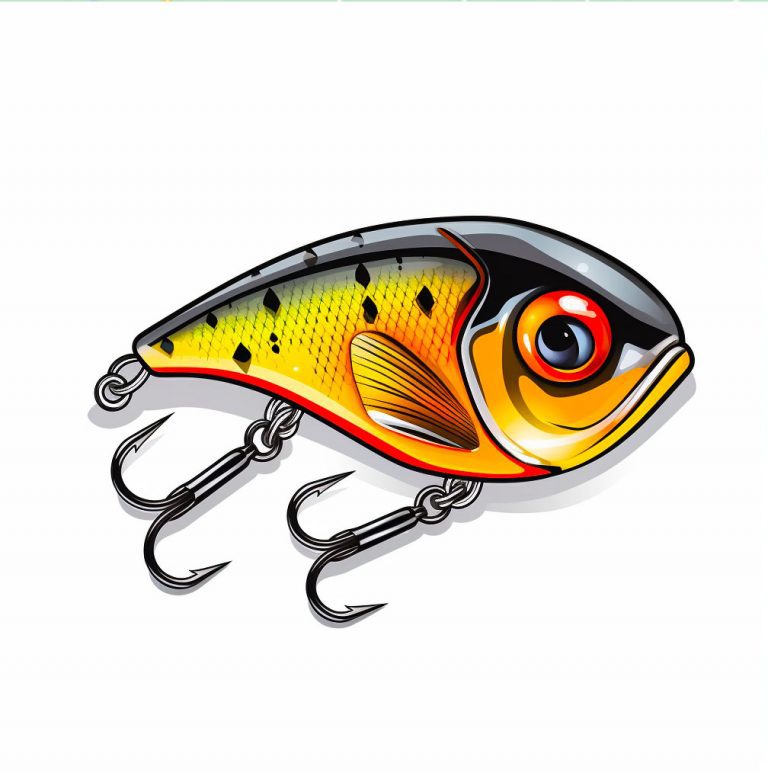
Guide To Catching Bass With Rapala DT Crankbaits
Introduction Bass fishing is one of my absolute favorite hobbies. There’s something about the thrill of the chase, the excitement of reeling in a big catch, that just can’t be matched. Over time, I’ve tried out a variety of different lures and techniques to reel in those big bass, but I have to say that […]
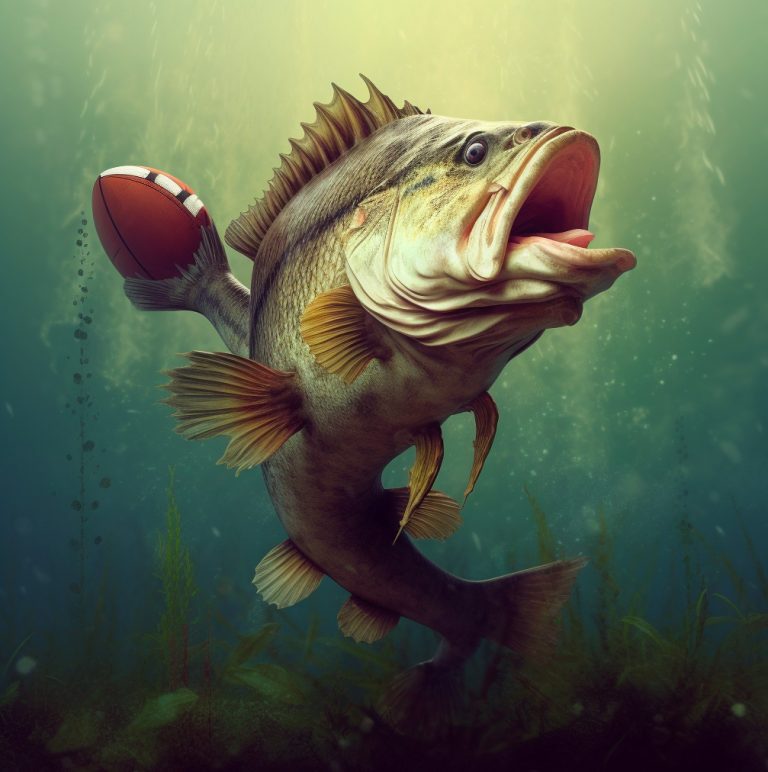
A Guide To Catching Bass On Football Jigs In Every Season
Introduction: Football jigs are a versatile and effective fishing lure that can be used to catch bass all year round. However, different seasons require different approaches when it comes to fishing, and the same is true for football jigs. As an avid angler, I have spent countless hours fishing for bass using football jigs, and […]
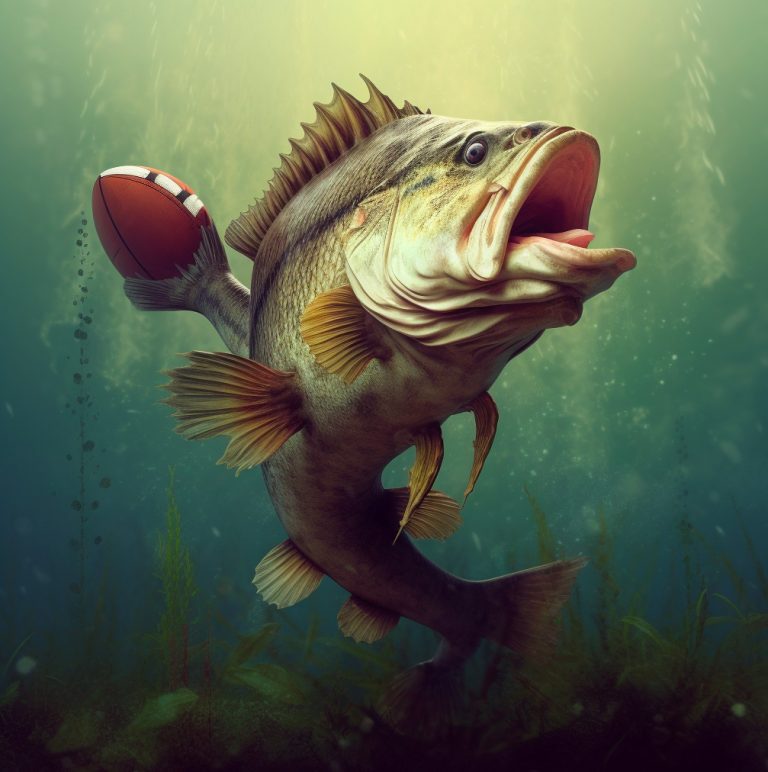
Best Rod, Reel and Line For Football Jigs
Introduction As I sit here on the shores of my favorite fishing spot, I can’t help but feel perplexed by the amount of gear that fishermen bring with them. Every angler seems to have their own unique setup, from rods to reels to lines. And while I appreciate the variety, it also begs the question […]
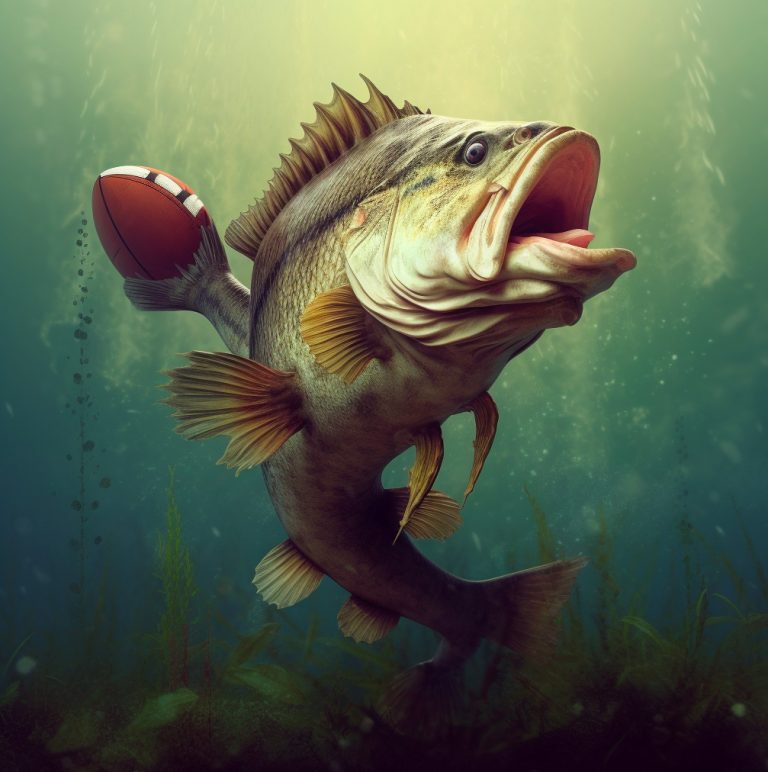
A Guide To Football Jigs For Bass
Introduction As a lifelong angler, I’ve tried my hand at countless types of fishing for different species. But when it comes to fishing for bass, there’s one technique that has stood out above the rest: using football jigs. At first, I was skeptical. The jigs didn’t look like they had much action in the water […]

